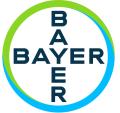
EU Trade mark. Exhaustion of the rights conferred by a trade mark. Parallel import of medicinal products. Repackaging of the product bearing the mark. New outer packaging.
Case C-204/20 - Questions
(1) Is Article 47a of Directive [2001/83] to be interpreted as meaning that, in the case of parallel imported products, the measures for the removal and reaffixing of the safety features pursuant to point (o) of Article 54 of Directive [2001/83], which are carried out by the parallel importer either by means of “relabelling” (use of adhesive labels on the original secondary packaging) or by means of “reboxing” (production of new secondary packaging for the medicinal product), can be considered equivalent if both measures otherwise comply with all the requirements set out in Directive [2011/62] and Delegated Regulation [2016/161] and are equally effective in enabling the verification of authenticity and identification of medicinal products and in providing evidence of tampering with medicinal products?
(2) If the first question is to be answered in the affirmative: In the light of the new anti-falsification rules, can a trade mark owner oppose the repackaging of the product in new external packaging (“reboxing”) by a parallel importer where the parallel importer is also able to achieve packaging which may be marketed in the Member State of importation by merely affixing new adhesive labels to the original secondary packaging (“relabelling”)?
(3) If the second question is to be answered in the affirmative, is it the case that no harm is done if, in the case of “relabelling”, it is apparent to the relevant public that a safety feature of the original supplier has been damaged, as long as it is ensured that the parallel importer is responsible for this and has affixed a new safety feature to the original secondary packaging? Does it make any difference whether the signs of opening become visible only when the secondary packaging of a medicinal product is opened?
(4) If Question 2 and/or 3 is to be answered in the affirmative, must repackaging by means of ‘reboxing’ nevertheless be deemed to be objectively necessary within the meaning of the five conditions for exhaustion in respect of the repackaging (see judgments of 11 July 1996, Bristol-Myers Squibb and Others, C‑427/93, C‑429/93 and C‑436/93, EU:C:1996:282, paragraph 79, and of 26 April 2007, Boehringer Ingelheim and Others, C‑348/04, EU:C:2007:249, paragraph 21) if the national authorities state, in their current guidelines for implementing the requirements of [Directive 2011/62] or other such announcements of the authorities, that the resealing of opened packaging is not normally accepted or, at least, is accepted only on an exceptional basis and under strict conditions?
Ruling CJEU:
1. Article 47a of Directive 2001/83/EC of the European Parliament and of the Council of 6 November 2001 on the Community code relating to medicinal products for human use, as amended by Directive 2012/26/EU of the European Parliament and of the Council of 25 October 2012,
must be interpreted as meaning that provided that all the requirements referred to in that article are satisfied, repackaging in new packaging and relabelling of medicinal products imported in parallel constitute equivalent forms of repackaging as regards the efficacy of the safety features referred to in Article 54(o) of that directive, as amended by Directive 2012/26, without one prevailing over the other.
2. Article 10(2) and Article 15 of Directive (EU) 2015/2436 of the European Parliament and of the Council of 16 December 2015 to approximate the laws of the Member States relating to trade marks
must be interpreted as meaning that the trade mark proprietor is entitled to oppose the marketing, by a parallel importer, of a medicinal product repackaged in new outer packaging to which that trade mark is affixed where it is objectively possible to relabel the medicinal product concerned in compliance with the requirements provided for in Article 47a of Directive 2001/83, as amended by Directive 2012/26, and where the medicinal product thus relabelled could actually access the market of the Member State of importation.
3. Article 10(2) and Article 15 of Directive 2015/2436
must be interpreted as meaning that the trade mark proprietor is entitled to oppose the marketing, by a parallel importer, of a medicinal product repackaged in new outer packaging to which that trade mark is affixed, where the visible traces of opening of the original outer packaging which, where applicable, would result from relabelling of that medicinal product would be clearly attributable to the repackaging thus carried out by that parallel importer, unless those traces give rise, on the market of the Member State of importation or on a significant part of that market, to such strong resistance on the part of a significant proportion of consumers to medicinal products repackaged in that way as to constitute a barrier to effective access to that market, which must be established on a case-by-case basis.

















